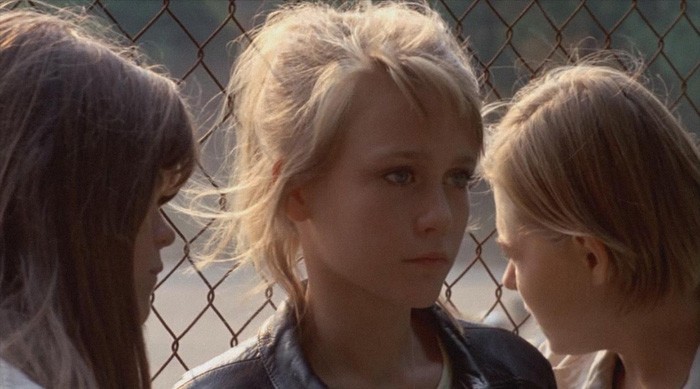Roy Andersson is a rather unique film director even for a country renowned producing brilliant and unconventional filmmaking. His career in media has mostly been in commercials and in over five decades he has only made four films. However, it’s a case of quality over quantity, winning numerous awards for his output. The Roy Andersson Collection, released by Artificial Eye on DVD and Blu-ray today, comprises his ‘Living’ trilogy and the magnificent A Swedish Love Story.
A Swedish Love Story is almost entirely distinct from the other films in the boxset. His debut film established him as a talented newcomer in World Cinema. It’s a love story between two teenagers (Pär – Rolf Solhman and Annika – Ann-Sofie Kylin) set to the backdrop of social change and a society struggling to settle within the progression in post-war Sweden. It’s a beautiful film and for me his best.
The ‘Living’ Trilogy comprises Songs From The Second Floor, You, The Living and A Pigeon Sat On A Branch Reflecting On Existence. The latter won The Golden Lion at Venice last year. All three films deal with the human condition in one way or another and are shot in a similar style. In many ways they’re like a Bosch- inspired sketch show without a punchline.
Inspired by the work of avant-garde Peruvian poet César Vallejo, Songs From The Second Floor sets the tone and style for the whole trilogy. Shot in a series of vignettes, with related but not intersecting stories, Andersson paints a bleak picture of a society losing its humanity. His first instalment focusses on our almost fatalistic need for love, our insignificance and vulnerability.
You, The Living again casts its eye over our desire to love and be loved but instead concentrates on the highs and lows of humankind. As with the whole trilogy it’s very much a dark satire, depciting people at their grotesque extremes. A Pigeon Sat On A Branch Reflecting On Existence carries on the same themes as its predecessors, but has a central story of two novelty salesman who haplessly wander through a series of increasingly absurd scenarios. All the ‘Living’ Trilogy are bleak, beautifully and absurdist, and work best as a whole.
The Roy Andersson Collection reinforces his place as one of Sweden’s greatest living directors. The use of the still camera in the trilogy positions the Swede as an observer, looking down on humanity with an expression of weathered perplexity. For someone who has spent his life working in advertising Andersson thankfully avoids the overly stylistic in favour of a beauty which is grotesque in its nature and wonderfully absurd.














No Comment